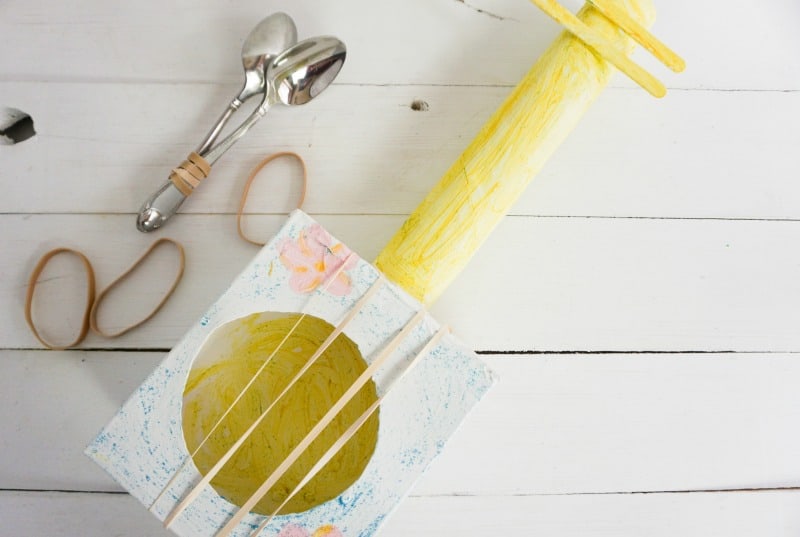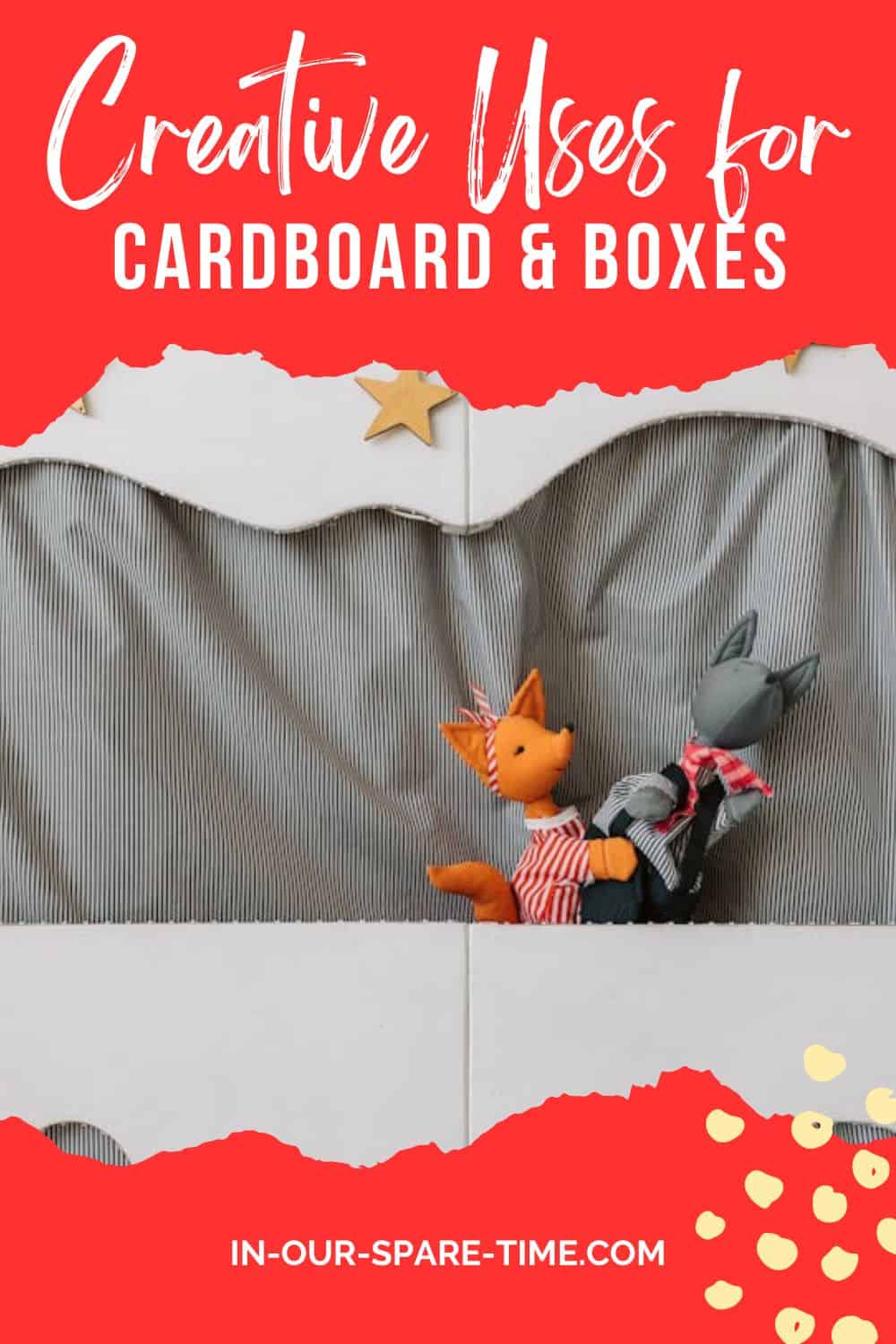Last Updated on June 8, 2024 by ellen
Here are some engaging and fun ways to play with cardboard, perfect for children ages 3-8. Keep your kids entertained with these easy play ideas.
Posts may be sponsored. This post contains affiliate links, which means I will make a commission at no extra cost to you should you click through and make a purchase. As an Amazon Associate I earn from qualifying purchases.

Table of Contents
Ways to Play with Cardboard
Cardboard is one of the most versatile materials for playtime. It’s recyclable, easy to find, and provides endless opportunities for creativity. It’s also a great way to teach kids recycling.
Materials Needed
To get started, you’ll need:
Cardboard (various sizes)
Markers
Scissors
Glue
Tape
Paint
Safety Tips
While playing with cardboard, always ensure adult supervision, especially when using scissors and other sharp tools. Encourage kids to play safely and handle materials with care.
1. Cardboard Castles
How to Create:
Gather large pieces of cardboard.
Draw and cut out castle shapes, including turrets and windows.
Use tape or glue to assemble the castle.
Decorate with markers and paint for a personalized touch.
Benefits:
Enhances creativity and storytelling.
Encourages imaginative play.

2. DIY Cardboard Robots
How to Create:
Cut different shapes of cardboard for the robot’s body parts.
Assemble the parts using glue and tape.
Add details like eyes, buttons, and antennas using markers and paint.
Benefits:
Promotes problem-solving skills.
Boosts creativity and fine motor skills.
3. Cardboard Cars and Trains
How to Create:
Use a large piece of cardboard for the base.
Cut and shape smaller pieces to create wheels, windows, and other car/train details.
Assemble the pieces using glue and tape.
Decorate with markers and paint.
Benefits:
Encourages role-playing and imaginative play.
Develops spatial awareness and design skills.

4. Cardboard Puppet Theater
How to Create:
Cut a large rectangular piece of cardboard for the theater stage.
Create a cut-out window for the puppet show.
Decorate the theater using markers and paint.
Make simple puppets using smaller cardboard pieces.
Benefits:
Enhances storytelling and communication skills.
Provides a platform for creative expression.
5. Cardboard Maze
How to Create:
Use a large piece of cardboard as the base.
Create walls and pathways by cutting and gluing smaller cardboard pieces.
Customize the maze with paint and markers.
Benefits:
Improves problem-solving and critical thinking skills.
Provides an interactive and engaging playtime experience.

6. Cardboard Musical Instruments
How to Create:
Choose your musical instrument, such as a guitar, drum, or maracas.
For a guitar, cut out a large rectangular piece of cardboard and a small circle for the sound hole.
Attach a cardboard strip for the guitar neck and add strings using rubber bands.
For a drum, use a cylindrical piece of cardboard and cover the ends with paper or fabric.
Decorate your instruments with paint and markers to make them colorful and appealing.
Benefits:
Encourages an interest in music and rhythm.
Enhances fine motor skills and hand-eye coordination.
Check out this cardboard box guitar.

7. Cardboard Playhouse
How to Create:
Gather large, sturdy pieces of cardboard to form walls and a roof.
Cut out windows and a door to create a welcoming entrance.
Assemble the pieces together using glue and tape.
Decorate the playhouse with markers, paint, and other craft materials like stickers or fabric scraps.
Benefits:
Provides a personal space for imaginative play.
Promotes creativity in designing and decorating the playhouse.

8. Cardboard Masks
How to Create:
Cut out a face-shaped piece of cardboard.
Cut out holes for eyes and a mouth.
Use paint, markers, and other materials like feathers or glitter to design the mask.
Attach a string or use a cardboard strip to hold the mask in place.
Benefits:
Encourages role-playing and imaginative play.
Enhances artistic skills and self-expression.

9. Cardboard Animal Figures
How to Create:
Draw and cut out animal shapes from cardboard.
Use smaller pieces of cardboard to add details like ears, tails, and wings.
Paint and decorate the animal figures with markers or other craft supplies.
Benefits:
Enhances knowledge about animals and their characteristics.
Promotes fine motor skills and creativity.

10. Cardboard Rocket Ship
How to Create:
Use a large cardboard box as the main body of the rocket ship.
Cut and attach triangular pieces for the rocket fins.
Create a cone for the rocket’s top using another piece of cardboard.
Decorate the rocket with paint, markers, and other materials like aluminum foil to give it a space-age look.
Benefits:
Sparks interest in space and science.
Encourages imaginative and role-playing activities.
11. Cardboard Picture Frames
How to Create:
Cut a large rectangular piece of cardboard for the frame base.
Cut out the center to create the frame opening, making sure to leave a border.
Decorate the frame with paint, markers, and other materials like stickers or glitter.
Attach a smaller piece of cardboard to the back as a stand or add string to hang it on the wall.
Benefits:
Provides a creative way to display artwork or photographs.
Enhances fine motor skills through cutting and decorating.
12. Cardboard Jewelry
How to Create:
Cut out small shapes like circles, squares, or hearts from cardboard.
Decorate the pieces with paint, markers, and other materials like sequins or beads.
Use string or elastic bands to create necklaces, bracelets, or rings.
Benefits:
Encourages creativity and design skills.
Promotes fine motor skills and hand-eye coordination.

Tips for Using Recycled Materials
1. Clean and Prepare Materials
Before using recycled materials such as cardboard, plastic bottles, or fabric scraps, ensure they are clean and free from any residues. This will make them easier to handle and more hygienic for crafting projects.
2. Collect a Variety of Items
Gather a diverse collection of recycled items to give your projects a unique touch. Think beyond cardboard and include materials like bottle caps, old magazines, tin cans, and scrap wood. The more variety you have, the more creative you can be.
3. Sort and Organize
Keep your recycled materials organized by sorting them into categories. Use bins or boxes to separate by material type, size, or colour. This will make it easier to find what you need when inspiration strikes.
4. Get Creative with Repurposing
Look beyond the original use of an item and imagine how it can be transformed. A cereal box can become a puppet stage, or an old T-shirt can be cut into strips for weaving. Encourage thinking outside the box to create something new and exciting.
5. Use Safe and Nontoxic Materials
Ensure any adhesives, paints, or markers used in your projects are safe and nontoxic, especially if children are involved. Opt for eco-friendly glues and washable paints to keep your projects environmentally friendly and safe for all.
6. Combine with New Materials
Don’t hesitate to mix recycled materials with new ones to enhance your projects. Adding new craft items like beads, glitter, or fabric can elevate your recycled creations and make them even more special.
7. Plan Your Projects
Having a clear plan or template before starting can help you make the most of your recycled materials. Sketch out your design and think about what materials you will need, ensuring you make efficient use of your collected items.

8. Educate and Inspire
Teach others the value of using recycled materials and share your craft ideas. This can be a great way to promote sustainability and inspire creativity within your community.
9. Store Unused Materials
Any leftover materials from projects should be stored properly for future use. This helps in reducing waste and ensures that nothing goes unused.
10. Share Your Creations
Showcase your recycled material projects on social media, at community events, or by gifting them. Sharing your work can inspire others to consider the sustainability aspect of crafting and encourage them to start their own projects using recycled materials.
Playing with cardboard not only stimulates creativity and imagination but also offers various educational benefits. From enhancing fine motor skills to promoting problem-solving abilities, these engaging activities provide endless opportunities for children to learn and grow. So, gather some cardboard, unleash your creativity, and enjoy the many fun-filled playtimes ahead!
Share Your Ways to Play With Cardboard
Cardboard is a fantastic resource for creating fun, educational, and imaginative play activities for kids. With a little creativity and some basic materials, the possibilities are endless. Remember to always supervise young children during these activities to ensure a safe and enjoyable experience.
So, are you ready to unlock a world of creativity with cardboard? Share your ways to play with cardboard with us and inspire others to join in on the fun!

Ellen is a mom of a 25-year-old son and 30-year-old daughter. She is Grandma to one adorable toddler. In what little spare time she has, she loves to read, watch movies, and check out the latest toys and games.